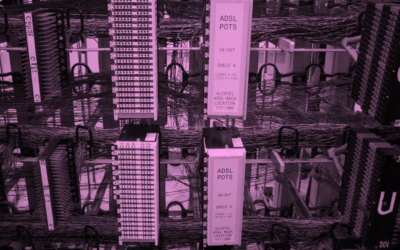Openreach Industry Consultation – How we propose to exit the 103 priority exchanges by 2030 – Response
On 28 March 2024, Openreach published its final reponse to the industry consultation on the Exchange Exit Programme.priority exchanges.
The Executive Summary highlighted a number of changes/clarifications which are summarised below:
“1.1. In June 2023 we consulted on our plans to exit a priority list of 105 exchanges by 2030. Our response to industry feedback on this consultation has been set across two separate responses. The first response was published in December and this document forms our final response and is the final part of the formal consultation process.
1.2. Part 1 (December 28th, 2023): Response confirmed the Exchange Exit programme strategic direction and set out our initial commercial offers.
1.3. Part 2 (This document): Adds additional clarity to the existing commercial offers we have proposed and proposes some additional commercial support. It also addresses process and product support.
1.4. This completes our response to issues raised by industry following our June 2023 consultation. We will continue to work with industry to address any further concerns raised through the formal industry forums and governance that is laid out in this response and with CPs through continued bilateral meetings.
1.5. A key objective of the December response was to confirm the Exchange Exit programme strategic direction. In that response to industry we covered the following:
-
- Our approach to exchange exit.
- Product availability impacts.
- Summary of commercial proposals to support exit exchanges.
- Our proposal for migration of voice and broadband customers.
- Our proposal for broadband OHP migration.
- Our proposal for migration of leased lines and dark fibre customers.
- Our proposal for inter-exchange dark fibre customers.
- Our proposal for Physical Infrastructure Access.
- Our proposal for Access Locate.Additional support to be provided by Openreach.
- Governance.
1.6. This second part of our response addresses the following areas:
-
- Further commercial offers and the proposed framework to exchange exit.
- Network and migration planning
- Product development and migration enablement.
- Bringing it all together through ongoing industry engagement and how that is structured.
- Notification of the start of the programme to exit 105 exchanges by 2030.
- Stop sell notification across all products..
- DSIT charter to protect vulnerable customers and the impact on exchange exit.
Summary of updates to our approach following industry feedback
Commercials and framework to support the exchange exit programme
1.7. We have set out a plan for how we intend to exit 105 exchanges by December 2030. We believe CPs have a positive case to exit our exchanges. By consolidating their presence to fewer exchanges and migrating customers away from legacy products, CPs will save on
ongoing costs including space, power and backhaul. But we recognise that whilst CPs will be better off in the end-state of a smaller exchange footprint, there are upfront costs in migrating services which may make it challenging for CPs to exit in our timelines. When end customers migrate, we will make sure that their upgrade experience is second-to-none, and that their ongoing service remains first rate.
1.8. We are also proposing a number of commercial initiatives to support CPs – these are included in a draft term sheet (Annex 1). Together we will need to enter into further discussion on the commercial proposals to come to a mutually agreed position on commercials.
Network and migration planning
1.9. Our goal is to move our customers onto our best available network as efficiently as possible. We are, and will continue to be, the largest full fibre network in the UK, with a commitment to be competitive and provide great service, making us an attractive network provider for customers and for end users.
1.10. Acknowledging the intricacies of the exchange exit programme, we are developing products and streamlined processes to facilitate a seamless transition. Collaborating closely with CPs, we will plan migration pathways and exit strategies for exchanges. For instance, we are exploring the EAD A-end shift process. Additionally, we aim to enhance our migration approach in collaboration with industry partners as our programme evolves.
Product development & migration enablement
1.11. We are proposing a series of enhancements to product ordering, migration processes, and the overall exchange exit approach. e.g. new bulk snap process for ordering space and power, Ethernet order journeys, updating the existing A-end shift singleton approach and creating two new bulk migration options.
1.12. These improvements aim to:
- Increase efficiency
- Streamline the migration journey
- Minimise the impact on all stakeholders, including end customers, CPs, and their customer
1.13. We will work closely with industry partners over the coming months to further refine the approach and ensure its successful implementation.
Bringing it all together
1.14. To ensure industry success in the exchange exit programme, we have proposed an engagement strategy focused on learning and collaboration:
- Industry calls and steering groups: These forums will provide regular progress updates on exchange exit plans and facilitate collaborative discussions.
- Industry working groups: Dedicated groups will address specific topics requiring joint efforts from CPs and Openreach to achieve programme success.
- CP communications approach: we will issue regular briefings to keep CPs informed.
- Bilateral meetings: CPs will have opportunities to discuss specific topics in one-on-one meetings.
Notification of the start of the Programme
1.15. We will publish CP briefings to mark the official start of the priority exchange programme to be exited by 2030. These briefings will also signal the commencement of the phase 1 four-year window, which will begin on 1st of April 2024.
Stop sell notification across all products
1.16. We will notify CPs a minimum of 12 months in advance of stopping the sale of all products in exchanges targeted for closure under the voluntary stop sell approach. An exceptions process will be implemented to handle specific product requests arising from the closing exchange to ensure we continue to meet our regulatory obligations. Notification of stop sell will be issued on the 1st of April 2024, via Openreach’s CP portal (briefing updates).
Migration process industry working groups
1.17. We have listened to CP feedback on our approach to exchange exit, and made the decision to set up industry working groups to help support CPs and create a best practice approach. We will use pilot learnings to develop our approach to exchange exit, and will continue to shape our migration pathways.
DSIT Telecare CP Charter impact on exchange exit
1.18. We continue to work with industry to develop processes for migrating vulnerable customers safely, in compliance with the charters published by DSIT in relation to Telecare. We recognise that getting these processes right has implications for the timing of vulnerable
customer migrations, but we consider that, with the exception of the trial sites, the timeframes for exchange exit are sufficiently distant that they should not impact overall timing. There should be limited impact on the process for the migration of most services.
TAR26
1.19. We note that Ofcom will be conducting its next review of wholesale telecoms services (the TAR, or Telecoms Access Review) ready for implementation in April 2026. We expect that it will need to take account of our plans for future network design and exchange exit when setting regulatory obligations. We will be asking Ofcom to ensure that the regulatory framework enables Openreach to exit exchanges in accordance with the proposals we have set out in our consultation responses
The full document can be downloaded from here.




0 Comments